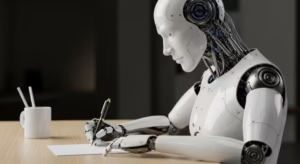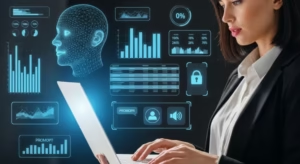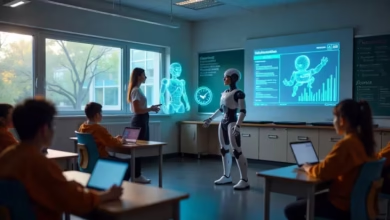Best Free AI Tools for Students in 2025

In 2025, students can enhance their learning experiences through a variety of free AI tools designed to facilitate study and research. This blog post explores the top free AI tools for students providing a comprehensive review of popular AI tutors and study aids that cater to various academic needs. Additionally, the article highlights the potential of essay writing AI to streamline research and improve academic writing skills. By following actionable steps outlined in the post, students can maximize their learning using these innovative tools enabling them to succeed in their studies. Whether for tutoring, study assistance, or writing support, free AI tools for students are paving the way for a more efficient educational journey.
Exploring The Top Free AI Tools For Students In 2025

As education continues to evolve, the integration of technology, particularly free AI tools for students, has become a game changer in enhancing learning experiences. These tools can assist with various tasks ranging from homework help to study planning, ensuring students can maximize their capabilities and streamline their academic responsibilities. In 2025, students are expected to embrace AI solutions that not only offer immediate assistance but also promote autonomous learning, making education more accessible and personalized.
Key Benefits of AI Tools for Students
- Enhanced understanding of complex subjects.
- Time-saving capabilities for research and assignments.
- Personalized learning experiences tailored to individual needs.
- Instant feedback on assignments and practice questions.
- Access to a vast range of resources and information.
- Collaboration opportunities through shared AI platforms.
Utilizing free AI tools for students provides an advantage in developing critical thinking and problem-solving skills. For example, many AI-driven homework help platforms use sophisticated algorithms to create customized quizzes and practice problems that adapt to the student’s progress. This ensures that learners are not only getting through their assignments but also genuinely grasping the material, paving the way for long-term academic success.
Comprehensive Review Of Popular AI Tutors And Study Tools

As students increasingly turn to technology for assistance, the rise of AI tutors and study tools is revolutionizing the learning experience. These innovative resources offer personalized support tailored to individual study needs helping students to grasp complex subjects complete assignments and prepare for exams more effectively. The array of free AI tools for students available now not only enhances academic performance but also fosters independent learning, making it crucial to delve into the key features and advantages of these tools.
To help you navigate through this digital landscape, we’ve compiled a list of popular AI tutors and study tools that are making waves in 2025. Each tool has unique capabilities aimed at addressing various learning styles and academic challenges ensuring there is something suitable for everyone. The following table summarizes some of these tools highlighting their features advantages and user-friendliness.
| AI Tool | Main Features | User Experience |
|---|---|---|
| Quizlet | Flashcards and interactive quizzes | User-friendly interface with mobile app support |
| Khan Academy | Interactive lessons and practice exercises | Comprehensive content library and easy navigation |
| Duolingo | Gamified language learning | Engaging and fun experience |
| Grammarly | Writing assistance and grammar checks | Seamless integration with various platforms |
Furthermore, it’s essential to consider how you can effectively choose the right AI tutor to meet your educational requirements. While exploring various options students should prioritize tools that provide a personalized learning experience and adapt to their pace. The following steps outline how to identify the most beneficial study tools for your specific needs:
Steps To Choose The Right AI Tutor
- Identify your learning goals and subjects you need help with.
- Explore reviews and ratings to understand the effectiveness of the AI tutor.
- Check for features that support personalized learning, such as adaptive tests.
- Assess the accessibility on multiple devices and platforms.
- Look for additional resources such as forums or community support.
- Test several tools to find the one that resonates with your learning style.
Key Features of AI Tutors
AI tutors are designed to enhance the learning experience through a variety of features. From interactive problem-solving sessions to instant feedback on quizzes these tools provide a comprehensive support system. Many AI tutors utilize machine learning algorithms to analyze student performance and adapt their teaching style accordingly, ensuring that each user receives optimized guidance. Furthermore, the ability to access these resources on-demand allows students to study at their convenience, significantly contributing to improved academic results.
Advantages of Study Tools
The benefits of utilizing study tools cannot be overstated. These tools empower students to take control of their learning by offering a wide range of resources from practice exercises to explanatory videos. They cater to different learning styles whether visual, auditory, or kinesthetiç making it easier for students to absorb information. Moreover, many free AI tools for students provide collaborative features that facilitate group study and peer interaction, enhancing the overall educational experience.
Utilizing Essay Writing AI For Effective Student Research

As academic demands increase, students are continually seeking innovative strategies to enhance their research and writing processes. Essay writing AI emerges as a powerful ally in this endeavor, offering tools that can assist students in synthesizing information and articulating their thoughts clearly. By leveraging these technologies students can streamline their research efforts allowing for more thoughtful engagement with their subjects while saving valuable time.
Tips For Enhancing Your Thesis Using AI
- Define your research question clearly.
- Utilize AI note-taking tools to summarize key points.
- Incorporate AI suggestions for relevant sources and citations.
- Employ essay writing AI to generate structured outlines.
- Use AI to assess and refine your thesis statement.
- Analyze AI-generated feedback for improved clarity.
By integrating AI note-taking functionalities students can annotate and organize their resources efficiently, making it easier to reference critical ideas later. This capability not only aids in curating information but also enhances the student’s overall comprehension of the material. Moreover, the collaborative nature of these tools encourages a dynamic approach to research, promoting a deeper and more varied exploration of topics.
Embracing AI in student research is not just about leveraging technology; it’s about unlocking a richer, more analytical academic experience.
In summary, the convergence of essay writing AI and powerful note-taking applications can significantly elevate the quality of student research. As these tools evolve and become more accessible, students are encouraged to embrace them, ensuring their work reflects both thorough research and articulate expression. This synergy enables a more holistic educational experience, paving the way for academic success.
Actionable Steps To Maximize Your Learning With AI Tools

Incorporating free AI tools for students into your learning routine can significantly enhance your educational experience. These tools not only provide personalized assistance but also enable you to tackle complex topics with ease. To fully harness their potential, it’s crucial to adopt a structured approach. Start by identifying the specific areas where you need homework help, whether it’s math, science, or writing, and select appropriate AI tools that specialize in those subjects.
Next Steps For Students Utilizing AI
- Determine your learning needs and subjects that require improvement.
- Research and select the most suitable free AI tools for those subjects.
- Create a schedule to ensure consistent and effective interaction with the tools.
- Engage actively by posing questions and seeking clarification on challenging concepts.
- Utilize AI-generated feedback to enhance your writing and problem-solving skills.
- Connect with peers to exchange experiences using these tools and share tips.
- Regularly assess your progress and adjust your tool usage accordingly.
By following these steps you’ll be well on your way to maximizing the benefits of free AI tools for students. Remember to periodically evaluate how these resources contribute to your learning journey. Embracing AI can transform your study habits and provide you with the homework help you need to excel academically.
For similar articles, please visit: AI in Education
Homepage / humanaifuture.com




